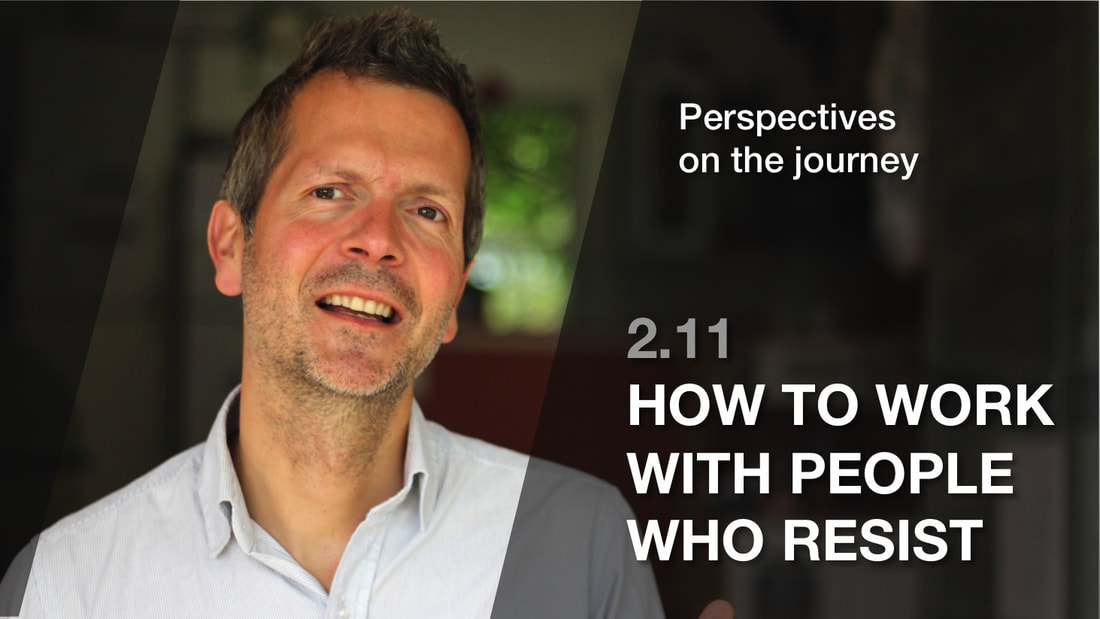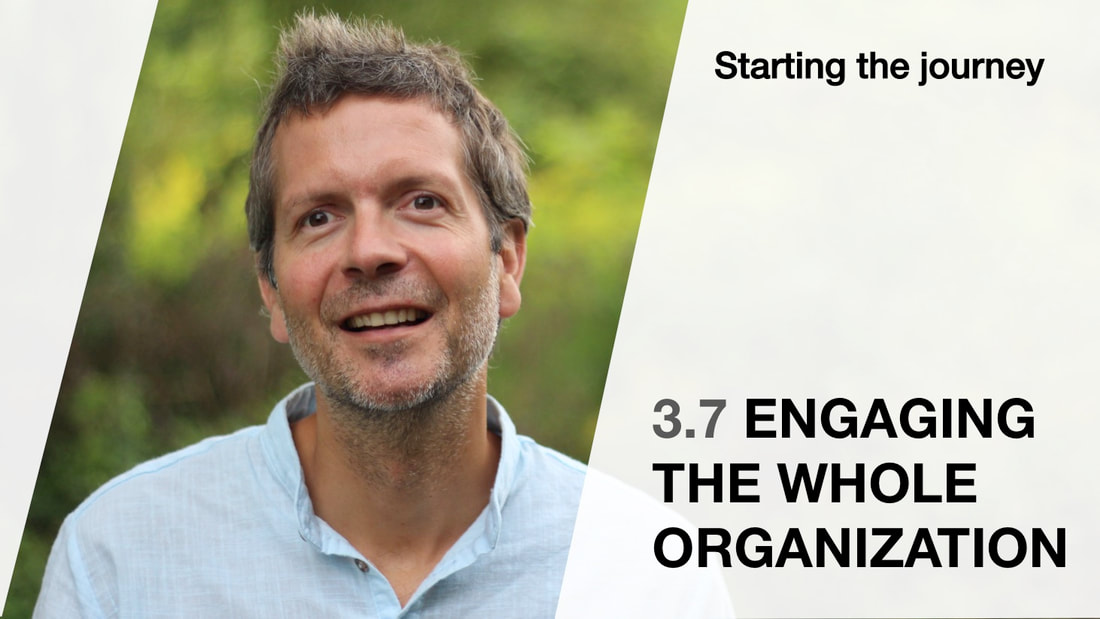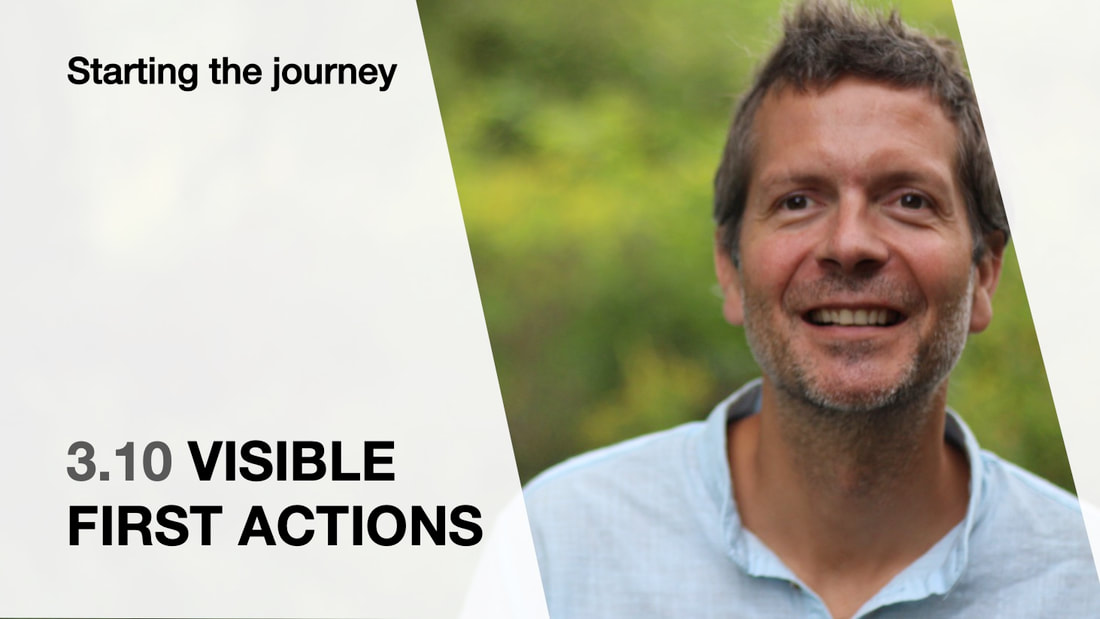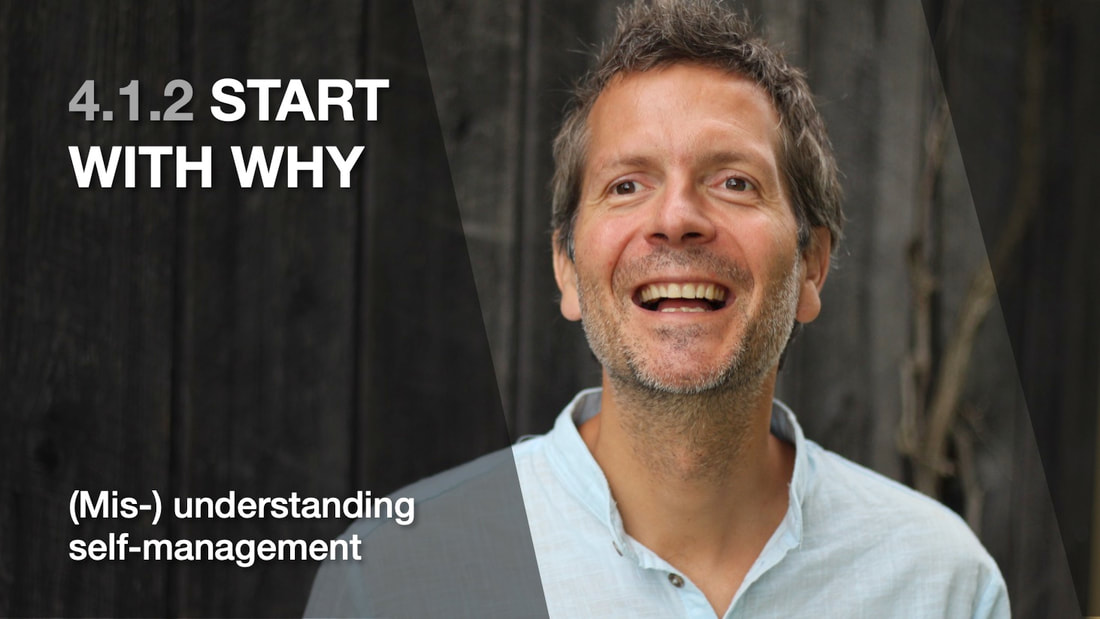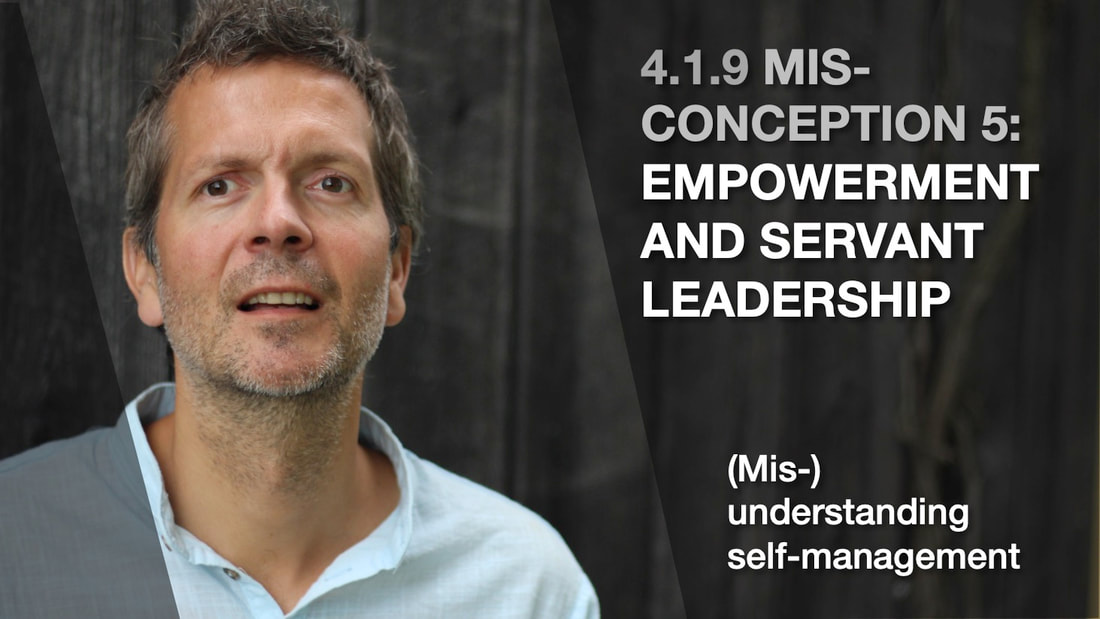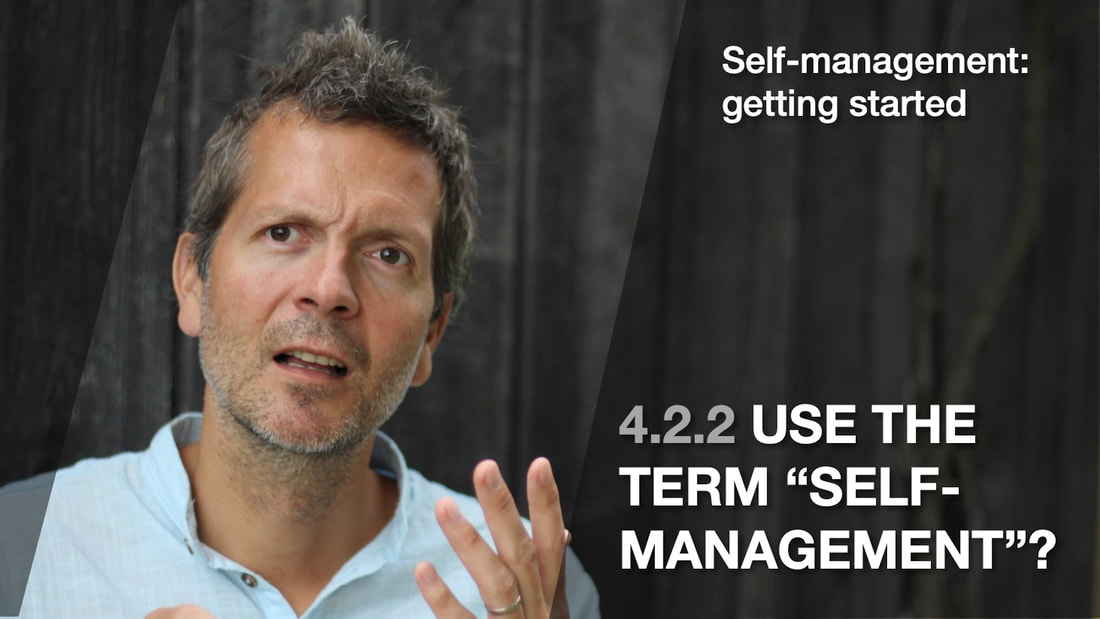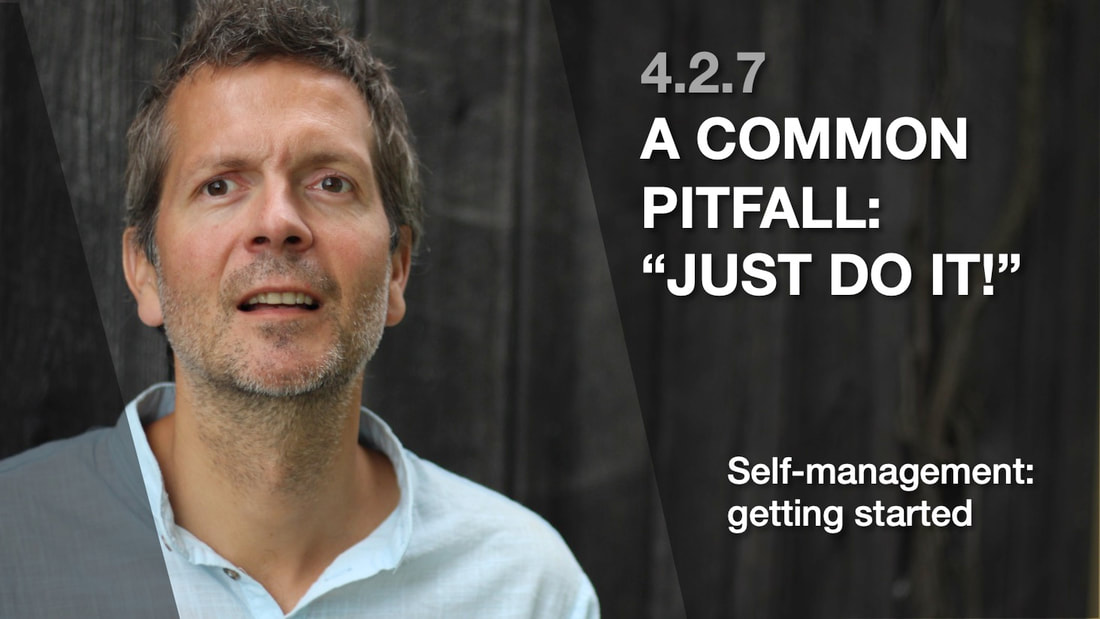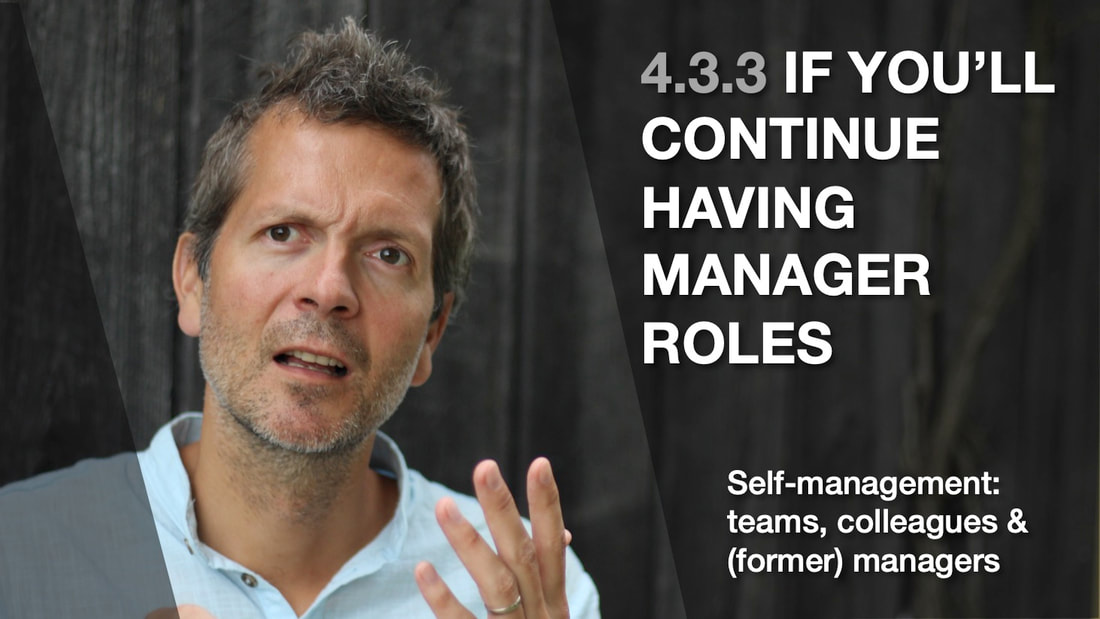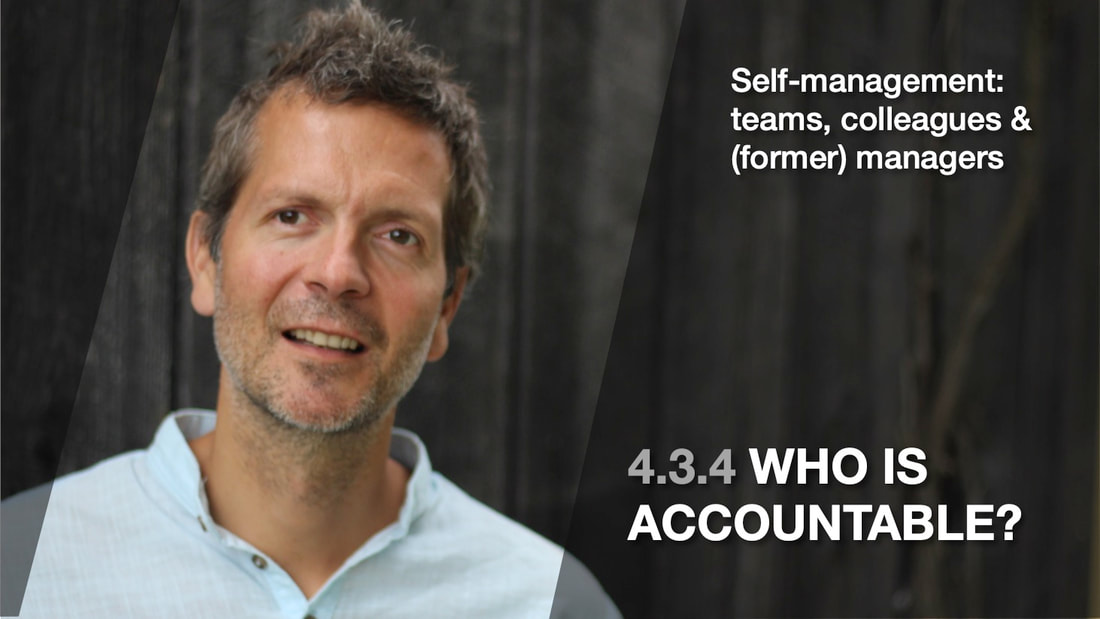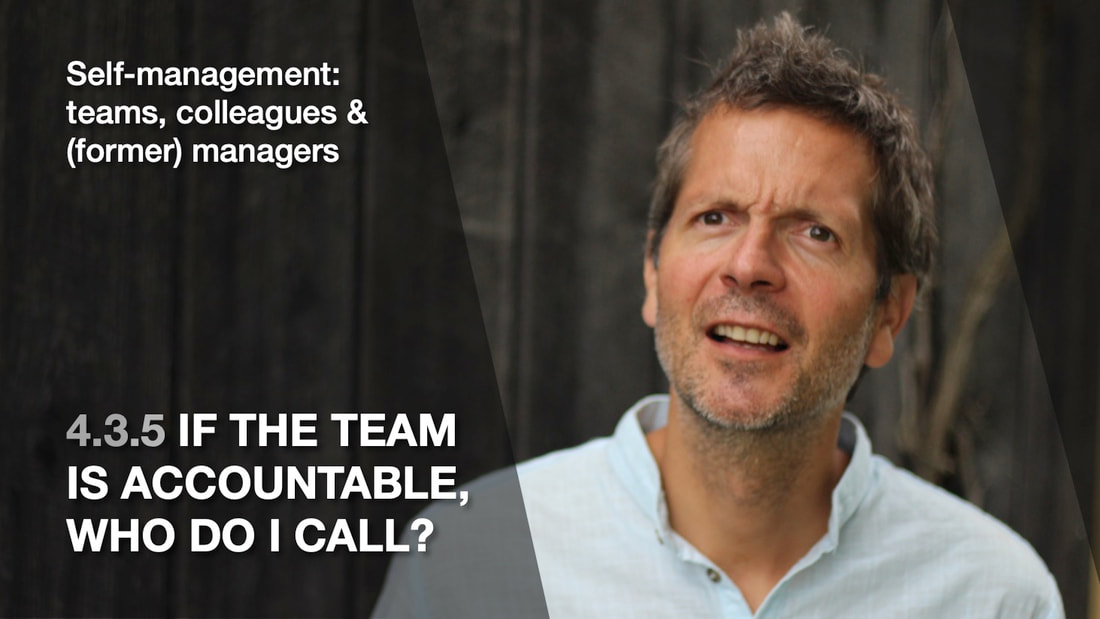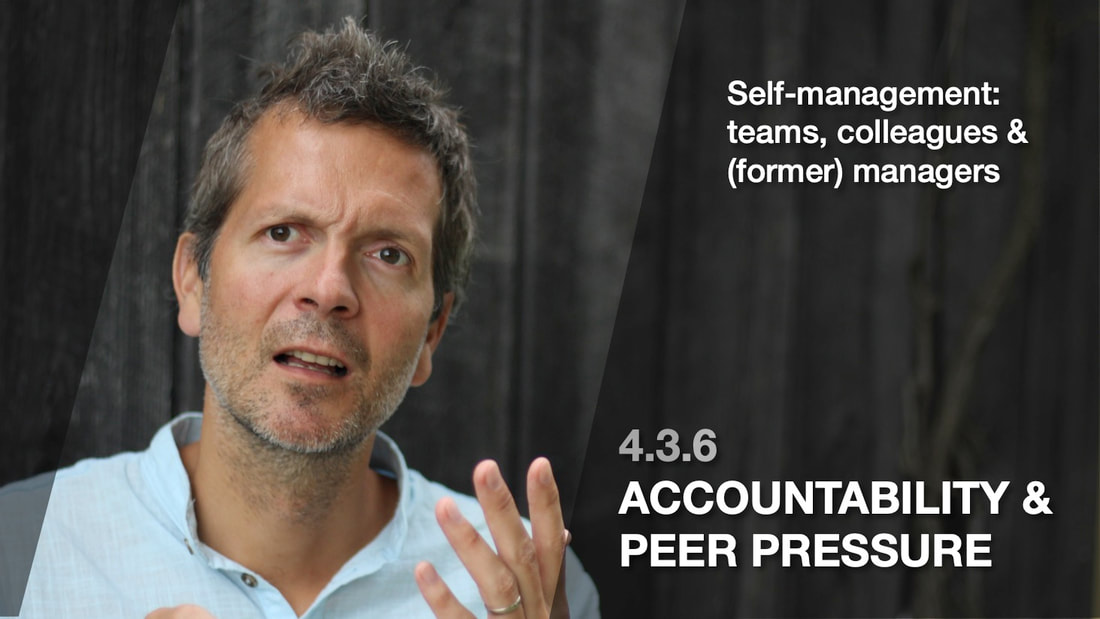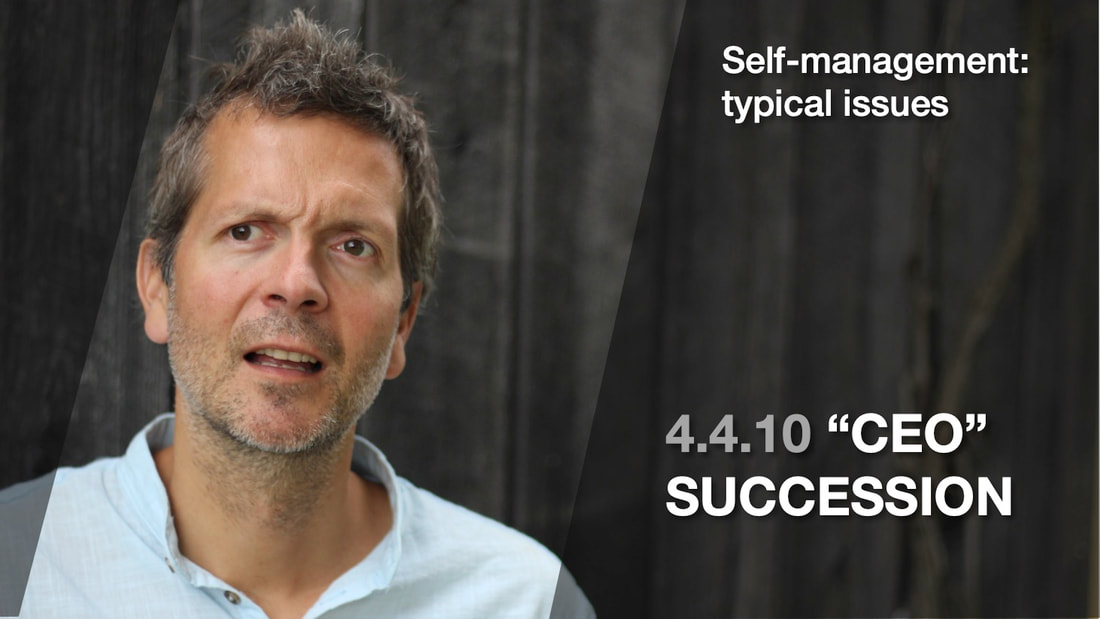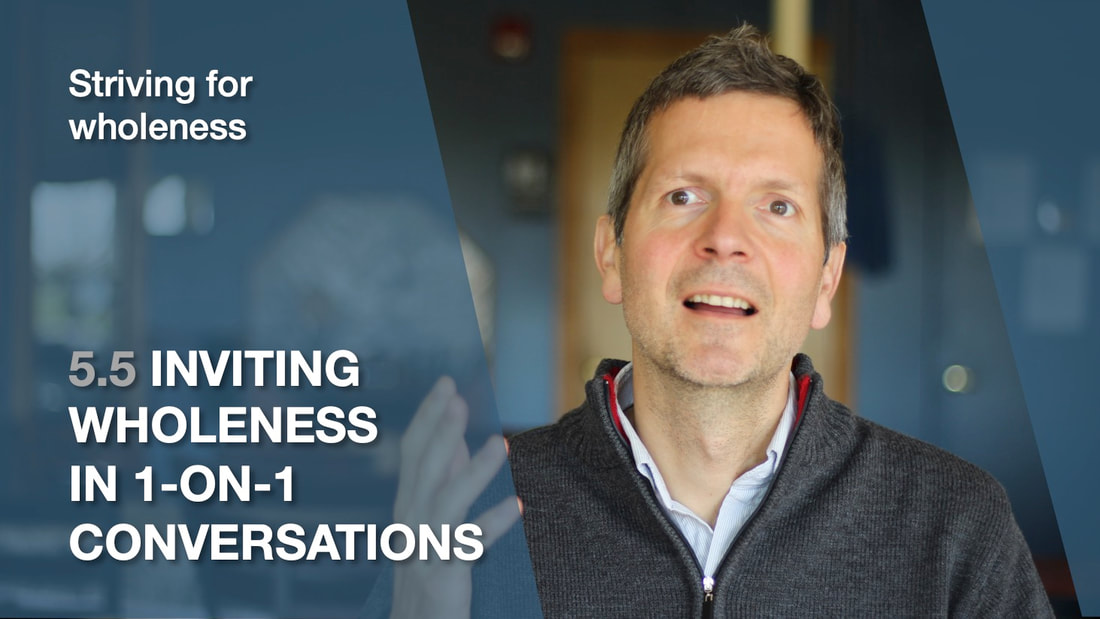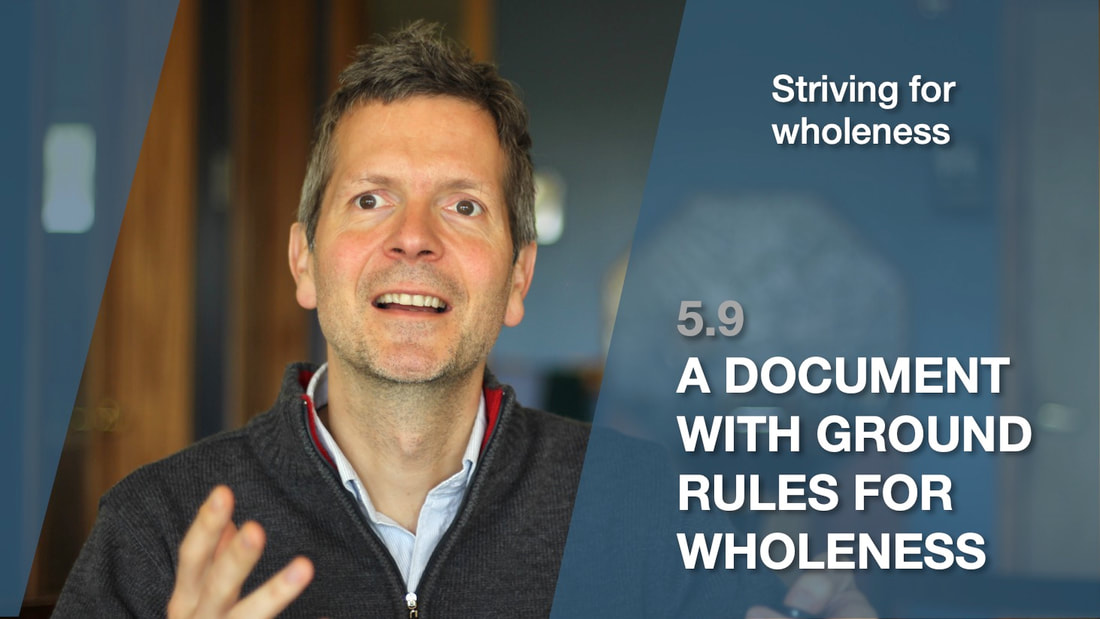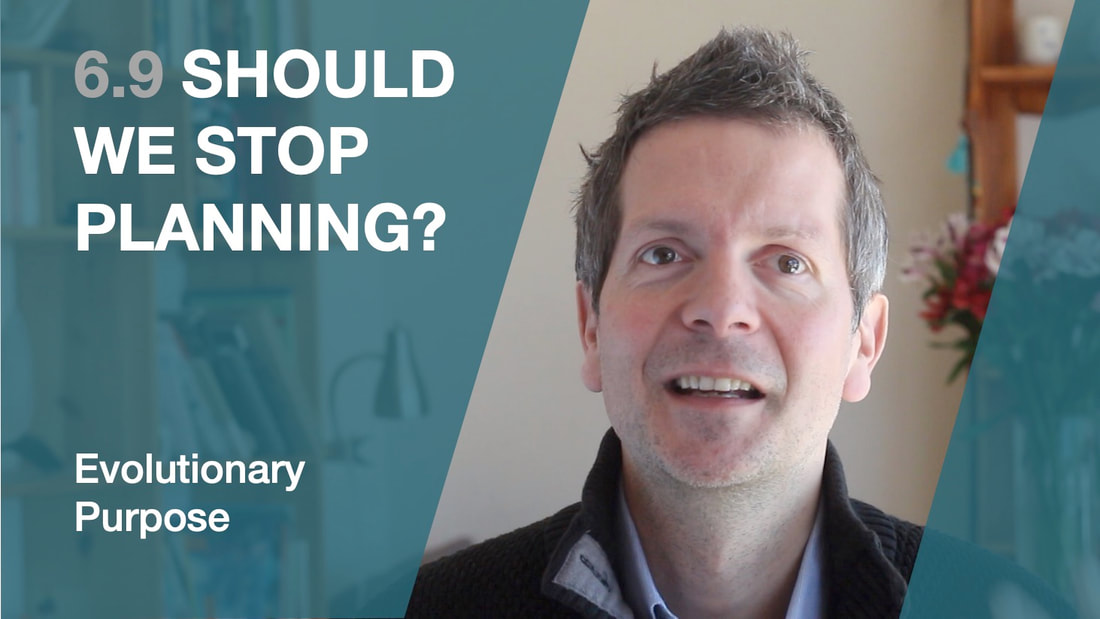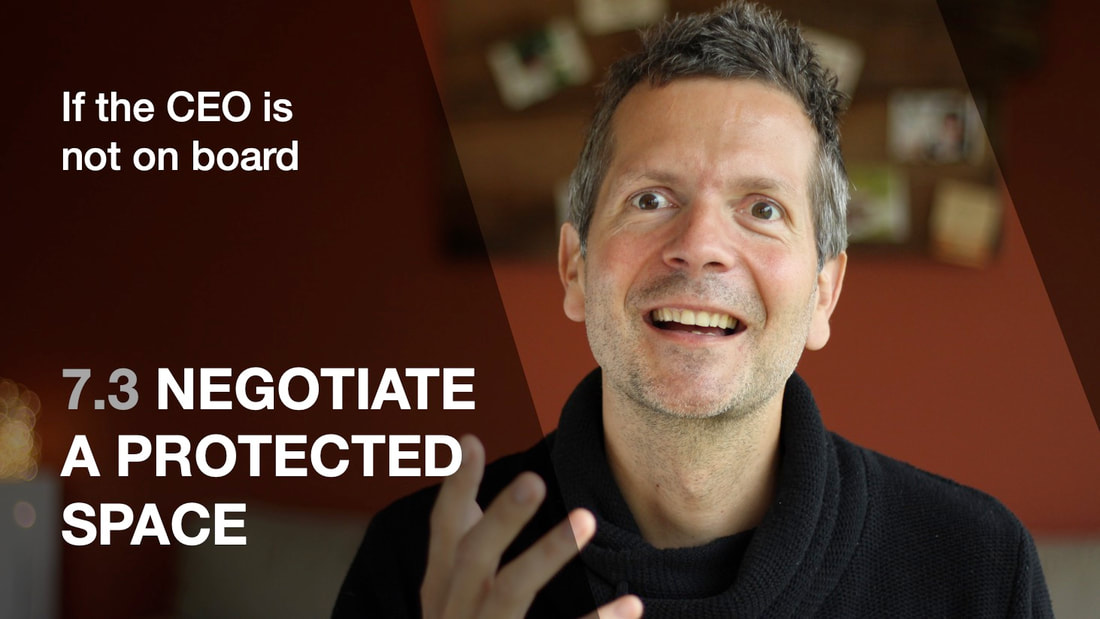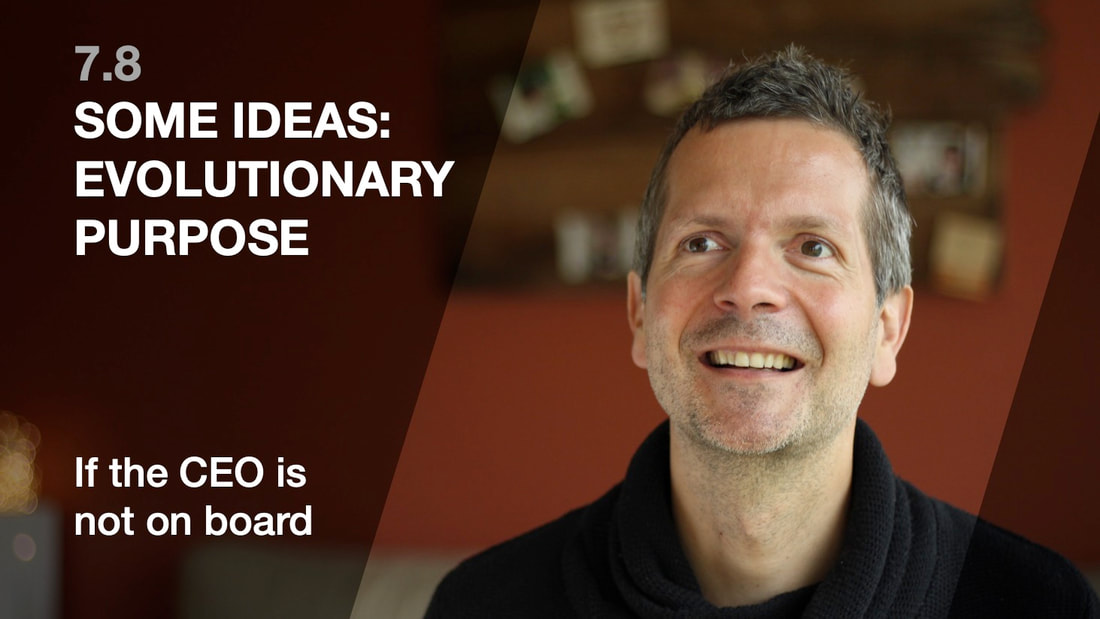** Now also available as a podcast **IIt is available on Apple Podcasts, Spotify, and Google Podcasts and other platforms, in case you want to listen to it on the go.
130 insights. 8 topics.
|
1. THOUGHTS FOR TOP LEADERS
|
These videos are meant for the top leader ("CEO") of the organization, but they are equally relevant for other leaders championing the transformation. Remember the two conditions I believe are necessary for an organization to truly transform: the top leader is the one wanting and driving the change, and the board is supportive.
|
|
If you think the journey ahead is only an organizational journey, think again! It might well be the personal adventure of a life time.
|
This is perhaps the single-most important question I have for you. It's spooky to what degree the clarity of your answer might influence the ease or difficulty of the transformation ahead.
|
This question can give you powerful clues and energy for the journey ahead. What do you no longer want to do?
|
There is a level of fearlessness that is required. But what does fearlessness really mean? What doesn't it mean?
|
|
You can avoid creating unnecessary stress and false expectations by being clear about how far you are willing to go and what, at least for now, is beyond your level of comfort or imagination.
|
There are two ways to think about where you are going: as a leading-edge and frankly challenging destination. Or as a place where things become much simpler. How do you think about it?
|
There are two ways to think about the journey: will it be a challenging transformation? Or the adventure of a lifetime? It's worth shining light on the way you sit (perhaps unconsciously) with what's ahead.
|
To help you show up in new ways, what words, concepts, and phrases do you no longer want to use? What new vocabulary could you invite?
|
|
We all have preferences and biases. For instance, do you have a bias for clarity/formalization or for ambiguity/emergence? It's helpful to know your preferences, to become more flexible and adapt to what's needed.
|
This is one of the questions I see leaders struggle with most. Can I still make decisions? And if I do, how will this not contradict what this is all about? For an answer, you need to distinguish the various roles you hold.
|
A deeper look at one of the new roles of the "CEO" - what does "holding the space" mean during the transition?
|
Three ideas for how you can get support and energy to sustain you on the personal and organizational journey you are on.
|
2. PERSPECTIVES ON THE JOURNEY
|
We all have a certain idea - often unconscious! - about how change happens. And for the kind of transformation to a new paradigm we are talking about here, I've noticed that the models we have tend not to be useful. We all have quite a bit of unlearning and relearning to do.
|
|
We've all inherited ways to think about change ... and it might be time for an upgrade! You can't plan this change in the way you might be used to.
|
"If all you have is a hammer, everything looks like nails." Here I invite you to explore which kind of interventions you naturally gravitative towards, and which you tend to neglect.
|
I get this question often: where do we start? I tend to respond with two questions of my own that can help you find the best answer for you.
|
In larger organizations, where do you start? At the top? The bottom? A pilot in one area? One process across the entire organization?
|
|
In the old "top-down" mode, there is this subtle level of fear that drives us to think things through completely and try to avoid any possible mistakes. Another habit we can unlearn.
|
There are two opposite traps that are easy to fall into. Letting team experiment forever with new practices, and never standardize the best practice that emerges (isn't standardizing old school?). Or standardizing way too early.
|
In some organizations, teams are purposefully left to struggle, even though other teams have already cracked how to operate in new ways. Isn't that awfully wasteful? Or is it perhaps a necessary part of unlearning and relearning?
|
Several leaders I spoke with had this advice to share: don't turn this transformation into a program! Don't give this journey, or the new world you aim for, a name.
|
|
What is our identity that will not change? Where is the future already here? Two powerful questions I invite you to explore.
|
In some organizations, pent-up frustration suddenly breaks out. It can be at once disconcerting and a valuable phase in building a healthier future.
|
Some advice I've heard from leaders about they dealt with the resistance that inevitably shows up when you invite people to a fundamental change.
|
Organizations that make the fundamental leap you are about to take often experience some shadows along the journey. What are these shadows and how can you try to avoid them?
|
|
Boy, we take work and ourselves at work so seriously. What role could humor and lightness play in the transformation? And could you perhaps invite more humor and lightness into your own life?
|
Long word memos and PowerPoint slide decks feel so tired. They exhale a dreaded corporate smell. How could you engage colleagues in fresher, more authentic ways?
|
Traditional consulting methods are at odds with this kind of transformation. Is there a role for coaches, facilitators, or consultants nevertheless? And if yes, what is it?
|
Boards can make or break this transformation. How can the board play a supportive role? How do a board's role change?
|
3. STARTING THE JOURNEY
|
Some thoughts about how to get started, distilled from what I've heard from organizations who are now firmly on the journey.
|
|
Many employees have learnt from past experience not to trust people at the top. And you are asking them to join in a journey that might not make sense to them, at least at first. They will join only if they really trust you.
|
Walk around the shop floor and talk from your heart about your hopes and longings. Learn to speak your message and see how it resonates with others - and what it does to you to share it.
|
If you check in with your integrity, you'll probably notice there are lots of rituals of management that you can no longer condone. Lots of things that were barely visible suddenly stand out, ready to be changed.
|
As a top leader you are "different". This insulates you from others and makes you less powerful in the transformation. It is time to be a mortal again.
|
|
How do you engage the executive committee, some of whose members might not share your sense of direction?
|
In large organizations, engaging the whole organization right away might not be practical. Starting with creating a group of first followers seems to have many benefits.
|
When is a good moment to go public with your vision, and how? It's a tricky question, because you want to invite the whole organization, but avoid a big "ta-da" announcement.
|
I've heard (and can easily believe) that making old and new assumptions explicit is perhaps the most powerful step you can take in the early stages of the journey.
|
|
For every topic you feel needs to be reinvented, invite a group of volunteers. A typical pitfall is to give them a blank check. Invite them instead to practice the advice process.
|
Is it a good idea to start with some visible, symbolic actions? And what might they be?
|
A lot of companies want to visit organizations that are further ahead on the journey. I have a sense this is often done for the wrong reasons.
|
I've noticed it can be reassuring to have, early on, a mock design session of what the organization might look like in the future. Just to get a reassuring sense of yes, this looks possible.
|
4. SELF-MANAGEMENT
|
By far, self-management is the topic that leaders who are reinventing their organizations want to talk about most often with me. So this has become a juicy and copious section!
|
(Mis)understanding self-management
|
How do you think about self-management? Most people view it simply as a better way to organize work. In this video, I offer two other perspectives.
|
Organizations where leaders started talking about self-management as a goal in itself, without sharing a deeper "why", still have scar tissue to show for it.
|
Not everyone in your organization views the world through "Teal" lenses. How can you talk about self-management so it works for everyone?
|
A self-managed organization is so fundamentally different from a hierarchical organization that lots of misunderstandings are bound to show up. One of your new roles is now to relentlessly address these misconceptions.
|
|
Some organizations have been self-managing for decades, withstanding severe recessions. It's still un uncommon practice, but not a risky one! (unless you fall for some of the other misunderstandings). .
|
Oh my, almost everyone falls for this one to some degree! Self-management is not the absence of structures, processes and rules. I've heard from many organizations who paid a real price for initially misunderstanding this!
|
In the old model, all major decisions and initiatives came from the top. That must mean then in the new model, the top must hold back and let thing happen "bottom up", right? Hmm, no, that's not quite it.
|
I don't like the words "flat" or "horizontal" organizations. And I think we need to bring more nuance to the statement "everyone is equal". Here is a beautiful paradox: in self-management, everyone has equal value, and yet we celebrate and value differences!
|
|
A clear sign that an organization's leadership hasn't yet fully embraced self-management is when it uses terms like "empowerment" and "servant leadership."
|
This is the other tragic misunderstanding I see again and again. A system wants to be in control to be healthy ... but not with the old top-down control mechanisms. But then... how?
|
Top-down control is replaced by self-correcting systems. This is a fundamental, fundamental concept we need to wrap our heads around. If you don't understand how self-correcting systems work, you don't understand self-management.
|
The notion of self-correction is so important that I'll walk through 6 practical examples of things that can go wrong in a workplace and what mechanisms could help the system to self-correct, so it doesn't need a boss to step in.
|
|
A powerful way for systems to self-correct is when people withdraw their participation. Is your time better used elsewhere? Just walk away and see what happens...
|
Here is a fundamental principle for leaders to understand: in self-management, your role is no longer to resolve tensions, but to orchestrate ways for the system to solve its tensions on its own.
|
Leaders in self-managing organizations realize they need to "give up control." But what does that really mean? And how to go about it?
|
There are a number of processes that you will need to upgrade to make the leap to self-management. Most likely, these five processes will be the most critical, and get you 90% there.
|
|
Can you just upgrade a number of practices to become self-managing, like I suggest in the previous video? It depends. Yes, if the culture and the mindsets at the top are roughly ready for it.
|
With rigorous self-managing practices, everyone gets to be fully powerful. Really? We also need to look at our dominent culture that makes it harder for some people to step into their full power, based among other on gender, race , social class etc.
|
This videos discusses three fundamental changes in organizations' structures: the move to cross-functional teams, the collapsing of middle-management layers and the changes to how support functions are structured.
|
Will we lose synergies and economies of scale if teams just start doing their own thing with no central coordination? This video discusses the best of both world: reaping synergies without the costs of centralization.
|
|
Many self-managing organizations still have a team "at the top". This is not incompatible with self-management, but I'll share 4 reasons why I believe such a team might not be a good idea.
|
For some people, the transition to self-management can be hard. In this video I offer a distinction between "growth pain" and "avoidable pain", and some ideas for how to deal with both. .
|
Some thoughts on adopting Sociocracy, Holacracy or other ready-made systems, vs. evolving your own version of self-management.
|
Self-management: getting started
|
You'll avoid quite some trouble if you are clear upfront about how far you are able or willing to go in terms of self-management (for now, at least). Once you start talking about it, people will really want to know, or make up their own projections!
|
Some organizations share that they regret using the term "self-management" early in the transformation because it raised unhelpful hopes and fears. But how can you move in a direction you don't name?
|
Self-management will quickly reveal the enormous waste of work in your current organization. Many people, in particular managers, might fear for their job. How can you address that?
|
In the transition to self-management, some things will be unclear and some balls risk being dropped. Do people care enough to pick up the balls?
|
|
Self-management requires that colleagues have a shared sense of purpose and vision. You might need to spend some time clarifying the purpose and vision before you really get going.
|
Where do you start with self-management? At the bottom? At the top? In the middle? All at once?
|
This happens too often: teams get the message "you are free now! Just self-organize". Most often, that's a recipe for failure.
|
What kind of support do teams need to start self-managing? And a cool trick to incentivize them to give it a try.
|
|
What if you are ready to start self-managing teams at the front line, but need or want to keep a traditional management "above"? How can that work?
|
In the long run, the team at the top is bound to disappear. But what's the team's role during the transition?
|
Support functions are an integral part of the "power over" in traditional hierarchies. Are support functions still needed? And how do you make the transition?
|
Old practices need to be replaced with new ones. But how do you do that in a way that doesn't feel like another new policy that is imposed onto teams from the top?
|
|
We are all used to org charts. So much so that when the pyramid goes, many people mistakenly believe any form of structure in gone too. Therefore it's crucial to make the new structure as visible as possible.
|
We've forgotten the power of rituals to sustain us through major transformations. How can we honor the best of the past and powerfully call a new future into being?
|
Self-management: teams, colleagues and former managers
|
|
This is a question I've heard of few times and which seems to prevent some leaders from making the leap to self-management.
|
Self-management works when healthy peer pressure makes people accountable to their commitments. But peer pressure has a bad name. Let's examine what it is and how we can make it as healthy as possible.
|
Training can help in the massive shift from hierarchy to self-management. But there is no reason to do it the old-fashioned way.
|
The transition can be at times both exhilarating and painful. Spaces to explore the pain with colleagues can offer great relief. And avoid that people project their pain and reject self-management.
|
Self-management: typical issues
|
When adopting self-management is hard, I'm willing to bet the reason is that you haven't formalized the new practices enough. Or that you have settled into being half-pregnant.
|
I've heard this a few times from perplexed leaders. Are there people who like to powerless and told what to do? Perhaps "my people" aren't ready for self-management yet?
|
This happens regularly. Teams relish their new freedom, but don't seem to take up the corresponding responsibility. What might be happening?
|
This seems to happen a lot ... and the obvious answer is: let's get everyone some feedback training. That's of course always a good thing, but I believe there is a better answer.
|
|
Pent-up resentment can break out when teams switch to self-management. Teams need help to keep a tab on this and deal with it to prevent things from turning ugly.
|
This is a common issue I hear from organizations that move to self-management. People's need for recognition and mentoring was somehow lost in the process.
|
Some people are disoriented when the career ladder disappears. They have a need to progress in their careers. Here are a few things you can put in place to take respect that need.
|
Linking pay to roles seems to be a natural idea. It's also a bad one, because people go back to identifying with their roles and competing for them. This is one of several thoughts about pay in self-managing organizations.
|
5. STRIVING FOR WHOLENESS
|
Here are some thoughts for introducing practices that invite colleagues to drop the mask and show up with more wholeness. I'm sure there are many more insights waiting to come into focus about the topic, but for some reason, this is not a topic leaders I've talked to have chosen to explore.
|
|
Before you get going, it's worthwhile clarifying what your invitation really is. What exactly does wholeness mean for you?
|
Just like our societal culture, your organization's culture comes with some barriers to wholeness. Can you create a culture where truly everyone can show up whole?
|
It can feel intimidating to start a conversation about wholeness. How can you talk about it with simplicity, in ways that are grounded in who you are and in the organization's purpose?
|
Without role modeling from senior leaders, no one is going to take the risk to drop the mask. Here are a few thoughts about what it could mean for you to try and interact from a place of wholeness
|
|
What if every interaction became a moment you try to do from a place of wholeness?
|
How do you bring meetings to a deeper place? Won't it feel strange at first?
|
What is a good setting to start introducing wholeness in the organization? Here are some concrete ideas for where you might start.
|
You can accelerate the movement by inviting the whole organization to reflect on wholeness and how to have more of it.
|
|
Ground rules are values made practical. A number of organizations choose to put these guidelines in writing. And then embed them in all the daily practices at work.
|
Not everyone will feel comfortable with the invitation to show up more fully. There might be valuable information hidden in their resistance to your invitation.
|
6. EVOLUTIONARY PURPOSE
|
In my experience, this is the breakthrough that is the least well understood. It's means much more than simply having a clear mission. And it's a breakthrough many people struggle with: No targets? No budgets? No strategic plan?
|
|
"Evolutionary purpose" is not about having a clear purpose statement. It is a much more profound shift in perspective.
|
Purpose today is almost always a fig leaf. What organizations are really after is maximization and self-preservation. Listening to purpose is a radical departure from the world we know. .
|
Purpose isn't simply a slogan for marketing purposes or to motivate employees. It's a source of guidance that, if you learn to listen, can help things unfold with surprising ease and grace.
|
Many work places today have a purpose that is destructive, wholly or in part. Are you willing to face this reality for your organization?
|
|
What ways can help you discern the organization's purpose? And who gets to participate?
|
Often we simply wrap nice sounding words around the products and services we offer... and ta-da, there is our purpose. It's time we stop the BS and face the fact that a true purpose doesn't allow us to continue bringing destruction to the world.
|
What about the strategic plans we used to do: is some form of that still helpful in a world of "sense and respond"?
|
A deep dive into how we can do strategic thinking when we no longer want to "predict and control", but instead want to listen to where the living system of the organization wants to go.
|
|
Today we often plan much more that we need to. From it's not far to the typical misunderstanding: planning is bad! It's not. There are simply two pitfalls to avoid.
|
Budgets are often the central backbone of organizations. Let's think through if budgets still make sense in a world where "sense and respond" replaces "predict and control". And if so, how.
|
Indicators and targets are central to the old ways of trying to predict and control the future. Can and should we do without them?
|
Rather than developing a "vision" for the organization, can we hear a call for where the organization wants to go? The difference might feel subtle, but to me it is quite fundamental.
|
7. IF THE CEO IS NOT ON BOARD
|
If the CEO is not on board, what can you still realistically do? Here are a few questions I believe might be useful for you to explore, as well as some suggestions.
|
|
Aiming for a wholesale transformation is off the table if the CEO is not on board. But you might still accomplish a lot within your sphere of influence.
|
Before you start your adventure, this question more than any other might help you chart the course: what risks are you willing to take?
|
I know of a unit leader who successfully negotiated a special status for his unit that gives him freedom to experiment. Here a few thoughts on how you might set up something similar.
|
Pardon my french. The idea is to insulate your unit or team from corporate ... well, I guess, shit ... raining down on it.
|
|
There is much you can do to minimize resistance and make your life easier. And it hasn't so much to do with what you say or do but with how you show up.
|
Here are some key practices related to self-management you could bring to your team even if the rest of the organization stays put with traditional management.
|
Inviting people to show up more whole in your part of the organization is well within your control and shouldn't stir up much trouble with the rest of the organization.
|
When you try to "sense and respond" in your team but the rest of the organization is stuck in "predict and control", you'll have to navigate two parallel worlds.
|
8. FOR COACHES,
CONSULTANTS
AND FACILITATORS
|
There is a handful of conversations I've had with coaches, consultant and facilitators over and over again. In this short section, I'll address each one in turn and share my thoughts on what this new world has in store for those of us who help organizations make the leap.
|
|
Do organizations moving to "teal" still work with consultants? Or do they just need coaches and figure the rest out by themselves? Interestingly, in my experience, the kind of support organizations need seems to be quite similar.
|
Many coaches and consultants have asked me how they could find clients who "get this" and with whom they could work. I'll share a few thoughts of how how you could find them... or rather how they could find you.
|
I often get the question: what's the best way to convince the CEO I'm working with to adopt the kind of management your book describes? Here is my answer.
|
Are you hoping to make an organization "teal"? Or to help an organization adopt self-management? Here are a few thoughts for you to examine what outcomes you might be attached to. .
|






















